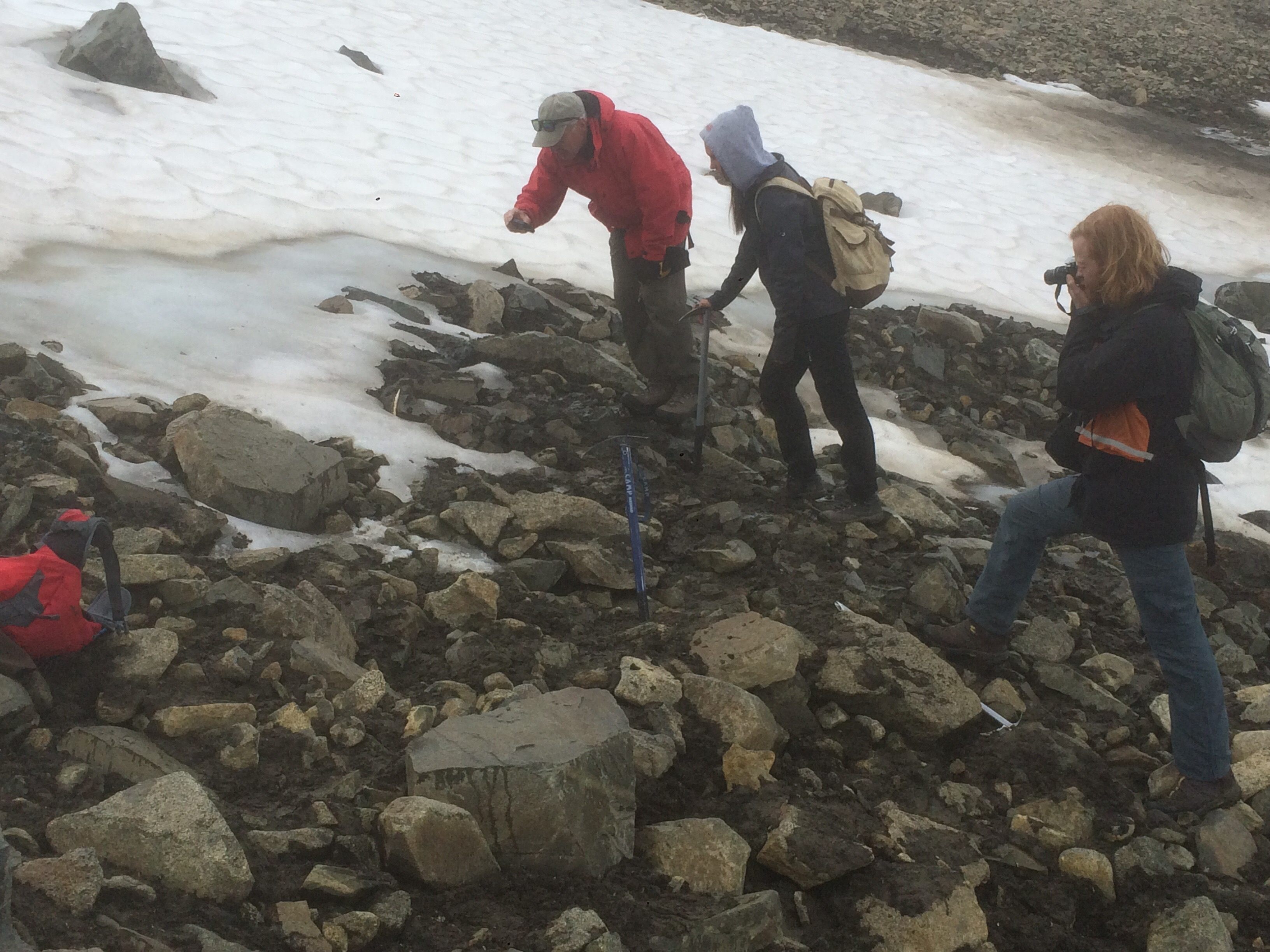Found: A Rare, 1,000-Year-Old Copper Arrowhead
It is one of the earliest examples of copper metallurgy ever found in Yukon.

In June 2016, Greg Hare, an archaeologist working for the territory of Yukon, in northwestern Canada, was standing on a patch of ice near Carcross, where Bennett Lake and Nares Lake meet, when he noticed something sticking out of the ground. Carcross was a famous stopover during the Klondike Gold Rush, and also a fertile caribou-hunting ground for First Nations peoples, so it is not uncommon to find wood, antler, or bone hunting implements sticking out of the ice. Such tools are easy to lose track of once they have been launched.
“We knew it was an arrow right away as we have recovered enough similar tools before,” Hare says, “but the curious part was that when we tried to extract it from ice it kept sticking.” That’s because attached to the barbed antler arrowhead was a large, heavy tip made of copper, a very unusual find in Yukon. “The few copper arrowheads that were found before had never been attached to anything,” he explains. “This is the first intact copper arrow we encountered.”

Around 1,100 years ago, local indigenous people made the transition from hunting with darts, launched with a spear-thrower known as an atlatl, to bow-and-arrow technology. Radiocarbon dating places the new arrowhead at nearly 1,000 years old, just after the transition, and well before any contact with Europeans. “The arrowhead is made of 99.5 percent pure copper,” Hare continues, “which shows it comes from local copper nuggets as opposed to European smelted copper [alloys].” Such a find is exceptionally rare and is providing insight into the evolution of hunting technology in this part of the Arctic.











Follow us on Twitter to get the latest on the world's hidden wonders.
Like us on Facebook to get the latest on the world's hidden wonders.
Follow us on Twitter Like us on Facebook